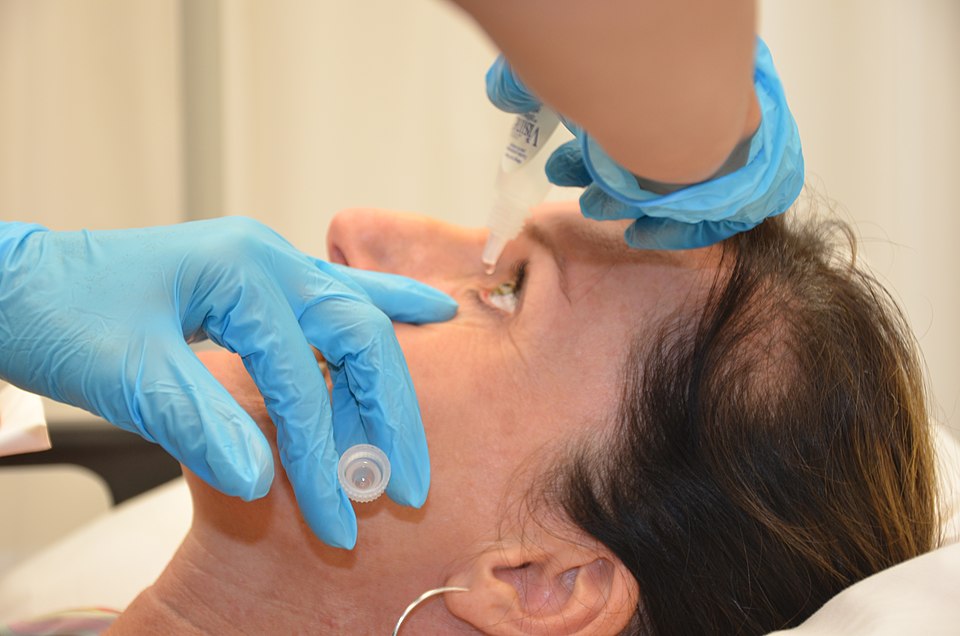Vuity
also known as Pilocarpine 1.25 %, AGN‑190584
Last updated August 1, 2025
Medical information on this page is for educational purposes only and is not a substitute for professional medical advice, diagnosis or treatment.
See our Terms & Conditions and Consent for Telemedicine for details.




Overview
Vuity is the first FDA‑approved prescription eye drop that temporarily sharpens up‑close vision in adults with age‑related farsightedness (presbyopia). One drop in each eye once a day causes the pupil to get slightly smaller. This pin‑hole effect increases depth of focus, so you can read a phone, price tag, or menu without readers for about 6 hours — sometimes longer. Most people notice clearer near vision 15 minutes after instilling the drop, and distance vision usually stays unchanged.12
How the Procedure Works & Options
Vuity contains a low‑dose (1.25 %) form of pilocarpine, a well‑known medicine that stimulates the eye’s muscarinic receptors. Within minutes, the circular muscle in the iris contracts, creating a smaller, more powerful aperture that focuses light from near objects onto the retina — similar to stopping down a camera lens. The formulation is adjusted to the natural pH of tears, which helps reduce the stinging once common with older pilocarpine drops.
Only one branded strength is available. People who need longer coverage sometimes add a second drop after 6 hours, but this is considered off‑label. Combination drops that pair pilocarpine with anti‑inflammatories are being studied.34
Who Is a Candidate?
Ideal users are adults aged 40‑55 who rely on +1.00 to +2.00 reading glasses and have healthy eyes. Vuity works best when:
- Your pupil still dilates well in dim light.
- You do not have significant cataract, retinal disease, or uncontrolled dry eye.
- You are comfortable with a slight dimming of vision in low‑light settings.
People with severe presbyopia, very small pupils, uveitis, glaucoma taking other miotic drops, or a history of retinal detachment should avoid or use caution. The near‑vision improvement seen in real‑world clinics mirrors the results of the GEMINI Phase 3 trials, where 1 in 3 participants gained three lines of reading on a standard eye chart.56
Vuity Suitability Score
Enter your details below to check your suitability for this treatment
Suitability Level
Recommendation
Benefits and Limitations
Benefits
• Quick onset and convenient once‑daily dosing.
• Non‑invasive and reversible — effects wear off by the next morning.
• Maintains distance vision better than over‑minus monovision contact lenses.
Limitations
• Near benefit fades after 6‑10 hours, so many people still keep reading glasses for late evenings.
• Works less predictably after age 60, when the pupil stiffens and the lens hardens.
• Insurance rarely covers the medication; out‑of‑pocket cost averages $80‑$100 per month.
In the GEMINI 1 trial, 30 % of users could read three additional lines at 40 cm versus 8 % with placebo, but only 7 % achieved this at 3 hours in very dim light, underscoring the drop’s reduced benefit in low‑illumination tasks.78
Risks and Side Effects
The most common side effects are mild headache, eye redness, and a brief burning sensation. A small percentage of users report momentary dim vision or trouble adapting when walking from bright sunlight into a dark room. Because pilocarpine contracts the pupil, night driving glare may increase.
Serious events are rare. Isolated cases of retinal tear, anterior uveitis, and sustained low eye pressure have been reported, generally in patients with pre‑existing risk factors. People with high degrees of myopia or prior retinal surgery should discuss these concerns with their eye‑care professional.910
Recovery and Long‑Term Care
No formal recovery period is needed. After placing the drop, gently press the inner corner of your eyelid for 60 seconds to keep medicine from draining into the nose. Most doctors schedule a follow‑up visit after the first month to confirm that pupils return to normal size and that the lens shows no early cataract changes.
Continued yearly eye exams are important to watch for glaucoma or retinal issues that can surface in mid‑life. Many users eventually combine Vuity with low‑power readers for fine print under dim light, or transition back to glasses alone as presbyopia progresses.1112
Latest Research & Innovations
Pharmaceutical research is racing to extend the duration and comfort of pharmacologic presbyopia therapy. Studies are evaluating twice‑daily micro‑dosing, sustained‑release inserts, and combination drops that pair pilocarpine with anti‑inflammatory or lens‑softening agents. Early data suggest that adding a non‑steroidal agent may cut down headache frequency without blunting the near‑vision boost.
Pipeline drugs that modulate the ciliary muscle instead of the pupil — and a next‑generation pilocarpine spray — are in Phase 2 trials. Market analysts predict that more than five presbyopia drops could be FDA‑approved within the next five years.1314
Recently Published in Peer-Reviewed Journals
Ophthalmology
March 1, 2023
Randomized Trial to Evaluate the Efficacy of the Nanodropper Device for Pupillary Dilation and Cycloplegia in Children.
Hoppe CB, Yonamine S, Kao BW, et al.
JAMA ophthalmology
April 1, 2022
Safety and Efficacy of AGN-190584 in Individuals With Presbyopia: The GEMINI 1 Phase 3 Randomized Clinical Trial.
Waring GO 4th, Price FW Jr, Wirta D, et al.
Next Steps – See a Presbyopia‑Care Specialist
If you are finding yourself constantly reaching for readers, an evaluation with a presbyopia‑care specialist can help you decide whether Vuity fits your lifestyle. The doctor will measure your pupil size, check retinal health, and explain how drops, glasses, contacts, or laser options can work together. You can connect with the right specialist on Kerbside and take a confident step toward clearer near vision.
Bring your current glasses prescription, a list of medications, and note any night‑driving issues so the visit is as productive as possible.1516
Trusted Providers for Vuity

Dr. Connie Wu
Specialty
Glaucoma
Education
The Warren Alpert Medical School of Brown University

Dr. Dane Slentz
Specialty
Oculoplastics
Education
Oculoplastics

Dr. Emily Eton
Specialty
Retina/Vitreous
Education
Harvard Medical School

Dr. Emily Schehlein
Specialty
Glaucoma
Education
Glaucoma

Dr. Grayson Armstrong
Specialty
Retina/Vitreous
Education
Ophthalmology

Dr. Jose Davila
Specialty
Retina/Vitreous
Education
Retina/Vitreous Surgery

Dr. Karen Chen
Specialty
Glaucoma
Education
Glaucoma

Dr. Levi Kanu
Specialty
Cornea and External Disease
Education
Cornea and External Disease

Dr. Nicholas Carducci
Specialty
Retina/Vitreous
Education
University of Pennsylvania Perelman School of Medicine